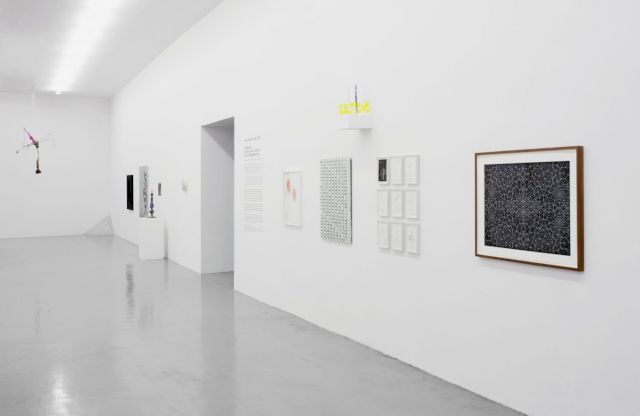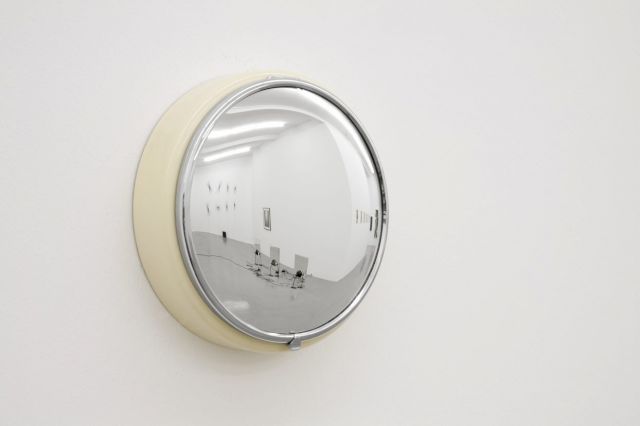Independent Collectors
Dominic & Cordula Sohst-Brennenstuhl
Talk about being part of the “Young Collections” series at Weserburg.
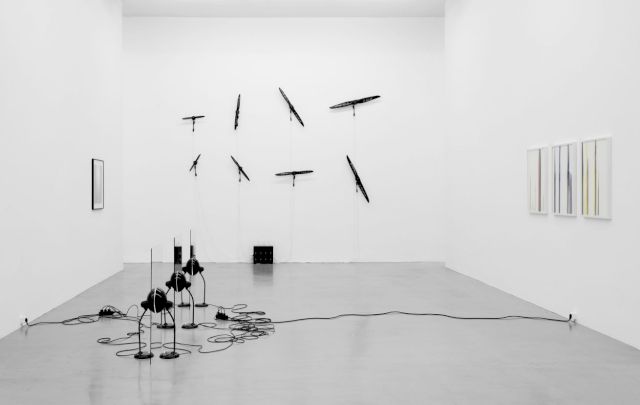
As part of the “Young Collections” series at Weserburg in Bremen, Dominic Brennenstuhl and Cordula Sohst-Brennenstuhl exhibit works from their ever-growing collection.
Here, Christine Breyhan talks to Dominic Brennenstuhl & Cordula Sohst-Brennenstuhl about revealing their collection to the public for the very first time at the Weserburg and the perks and challenges of living with art on a day-to-day basis.
Christine Breyhan:
As opposed to museums, private collections are not bound to exhibit the things that curators consider important within an art historical framework. And a private collection does not have to justify why it buys certain works and not others. Presenting your collection to the public at the Weserburg in Bremen consequently also means allowing it to be criticized by the public.
DOMINIC BRENNENSTUHL:
For us the presentation of artworks is a base to initiate a dialogue between many people. And this is precisely what art is meant to do. It is important for us to provide a platform for dialogue amongst people. Each opinion – whether it’s positive or negative – is a form of communication. It’s an exciting experience on many different levels of communication.
CB:
People collect art in a multi-facetted way. Where do the origins of your collection come from?
CORDULA SOHST-BRENNENSTUHL:
I grew up with art. My parents primarily collect Concept Art, which is installed all around their apartment. As a child you live and engage with it everyday on a very subconscious level. My parents also took me on art expeditions to Italy where we visited a lot of museums. Without realizing, you start to develop a sense for something that cannot be aquired with money. It is a feeling I find very hard to describe. It is like having tasted the most delicious piece of chocolate and suddenly you don’t enjoy the cheap one anymore. As a little girl I already had the opportunity to ask artists: “Why is that so?” This early engagement with art is something that had a huge impact on me.
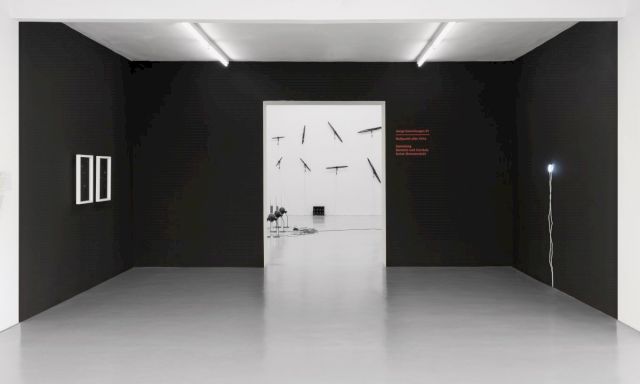
CB:
Is this also the reason how you were able to tell the difference between art and commodity at a young age?
C:
I have never seen art as commodity. Money just wasn’t something we talked about. It was always about the interaction with art and questioning what it is intending to do or achieve. How my husband started discovering and collecting art is slightly different…
D:
I had my first encounter with Conceptual Art when visiting my parents-in-law. As a student you do visit museums but you don’t really engage with the art on view. At my parents-in-law’s house stood, and still stands, a shingle surrounded by a frame of steel. After I visited their place about four or five times I finally asked them when they were planning to work on their roof and this was when they told me: “This is art”. The piece, a work by Andreas Slominski, deeply confused me. The fact that the object suddenly felt so removed of its original meaning and purpose left me wondering what I was actually looking at. This experience made me curious and so I started reading about any kind of art. The desire was born. Besides reading I started discussing art with my friends and family.
CB:
Most of the artists whose work you are collecting are around your age. Do you have a consultant who advises you what to add to your collection?
C:
No. We do not work with an art consultant. We read about art and discuss it a lot. It is about being aware of what is out there. We do visit a lot of art schools for actual impressions.
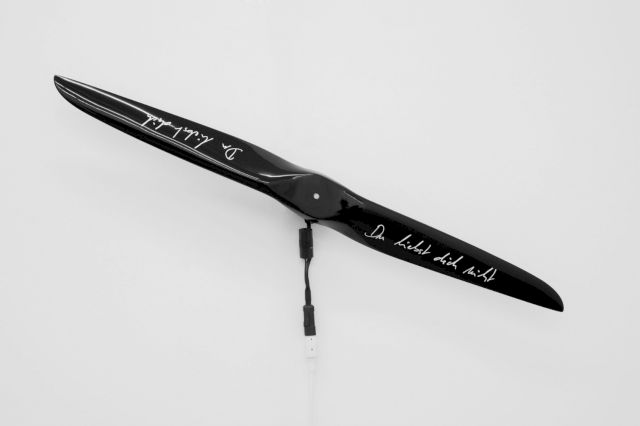
CB:
Do you visit art schools in order to look out for undiscovered talent?
D:
We visit the annual exhibitions of art schools to get new input and themes to discuss, rather than to find something to buy. We are very interested in how artists, even younger than the ones we collect, deal with the presentation of their works. We see those events as a forum for exchange. If you look at our collection, you’ll realize that we do not collect artists for the sake of their names. We have very young positions, which challenge our perspectives. When you work with an art consultant you are most likely also interested in increasing your collection’s monetary value. This is never our ambition.
C:
When visiting art schools it is very much about just seeing new things. It simply enriches you: different ideas, different materials – we recently encountered something with budgerigars in a big room and I wondered about the concept of integrating something living in a piece of art. Or we saw a work by an artist working with different chemicals. It is always about seeing and discovering the effect art has on the viewer.
D:
Your understanding of art just deepens. The most important thing when visiting art schools is keeping your eyes open. This way you allow for works to touch or irritate you and let them awaken your interest to engage with them on an extended level.
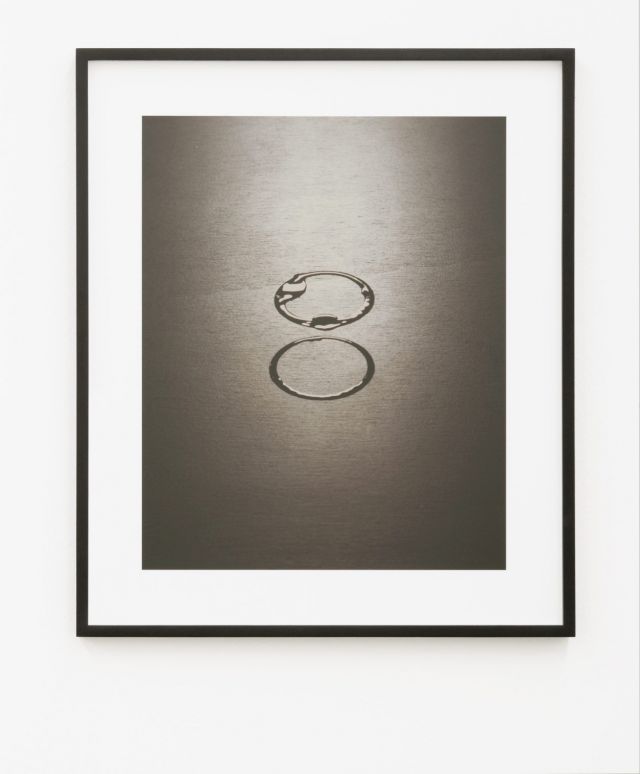
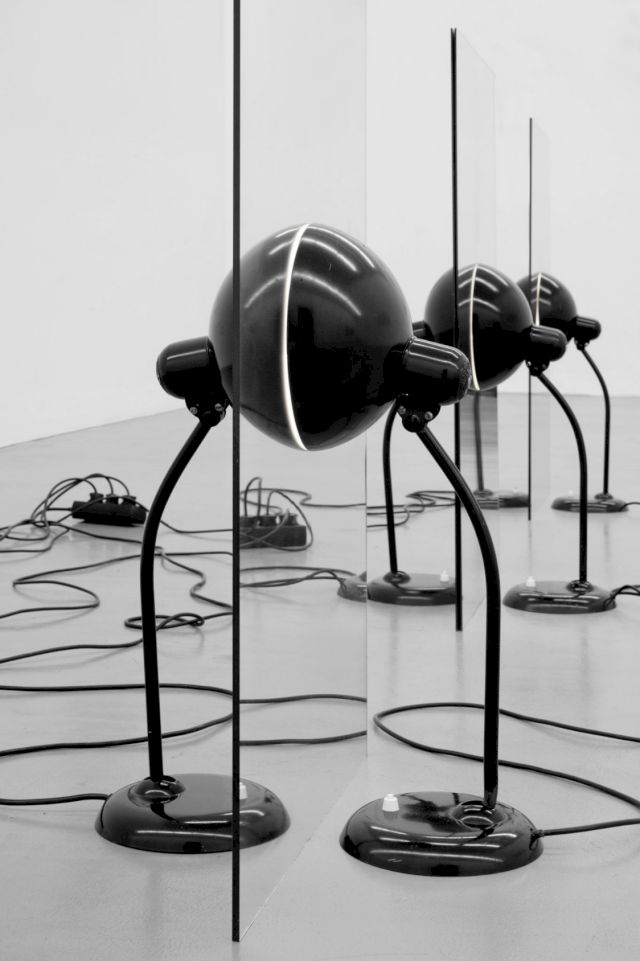
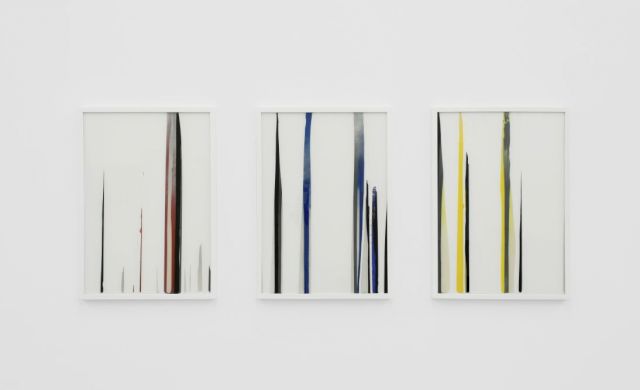
CB:
Is it necessary for you to fully understand a work of art or is the aesthetic value enough?
D:
Not understanding a work is part of the experience of art. The fact that I try to understand it, whether my approach is right or wrong, is an integral part of my encounter with the piece. The opinions of renowned art historians may be questioned. For us it is important to respond to art on both levels – emotional and rational. Because we live with art every day, the art has to endure us, as well as us having to endure the art. Therefore it is important to engage in a dialoge with the art you collect.
CB:
Adorno refers to the enigmatic character of a work of art. However, not all enigmas need to be solved…
C:
In our home we let the works speak for themselves. The art is free to be what it is.
CB:
You mean your home also functions as a sort of accommodation for the art?
D:
One of the most beautiful, but also one of the most questionable things we live with, is a 200-kilo heavy bag of sand by the German artist Alicja Kwade. The fact that we live with a big bag of sand indicates that we try to create a lot of room for art in our home. For us, it has been an extraordinary experience since we actually engage with it anew every day. And it is always different: there’s different lighting at different times of the day, different emotions.
C:
The beauty of it all is that we are very independent and never have to justify why we live with a bag of sand: It is art. We do not simply bear the works, we care about it.
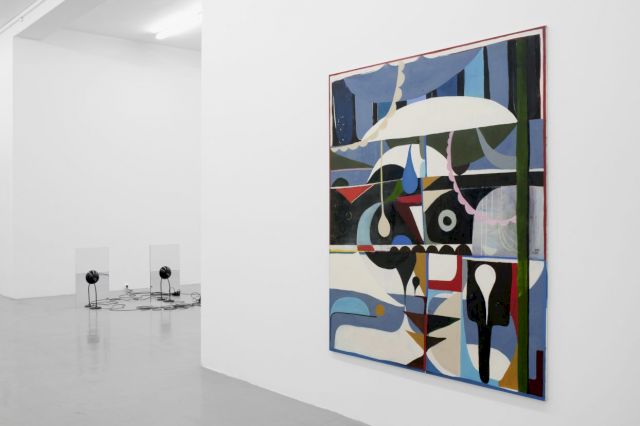
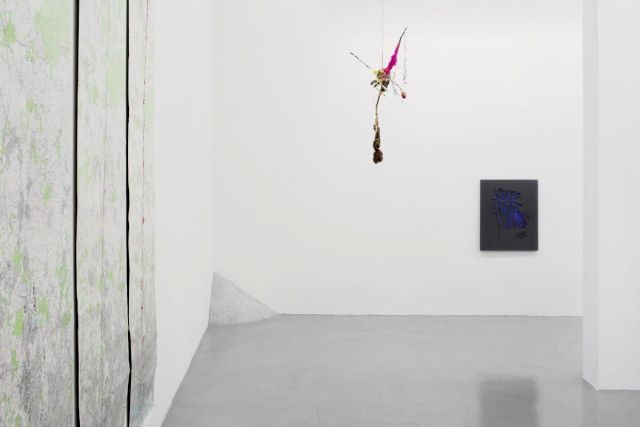
You need to enter a dialogue with the things you collect.
DOMINIC BRENNENSTUHL
CB:
Walter Benjamin writes in his arcade project, that a new work of art, which is being added ultimately changes the things that are already there. Have you ever added a piece to the collection that changed the dynamic?
D:
The dynamic of our collection always changes and the people who are familiar with it know that our portfolio of artists is actually quite small. Instead of buying from many different artists, we enjoy collecting in depth. We decided to follow artists an their body of works over years.
CB:
Do you have a concept or are you willing to take the risk to collect works from artists, who have no historical relevance yet?
D:
I believe Contemporary Art is a genre where art historical relevance still remains to be seen. Saying that, the art historical relevance of a piece is not important to us – we are interested in living and surrounding ourselves with the art.
CB:
Does every art collection need a focus?
D:
The focus is something, which becomes apparent over time. We do not choose works that are round or have yellow dots for example. Even if we are currently just buying works from young artists, the focus can shift. Your own standard should define the focus. It is important for us that the focus is something that is open to change. Because we collect for ourselves, the focus can shift over time.
C:
When we bought our first work we did not plan to start a collection. The fact that we ended up building one was a gradual process.
D:
A journalist recently asked us: “Do you consider yourselves collectors?” The thing is, we don’t really. I feel like what we are exhibiting is an extension of our personality. All the works are part of different periods in our lives. I do not really identify myself with the way the term “collector” is understood in our society.
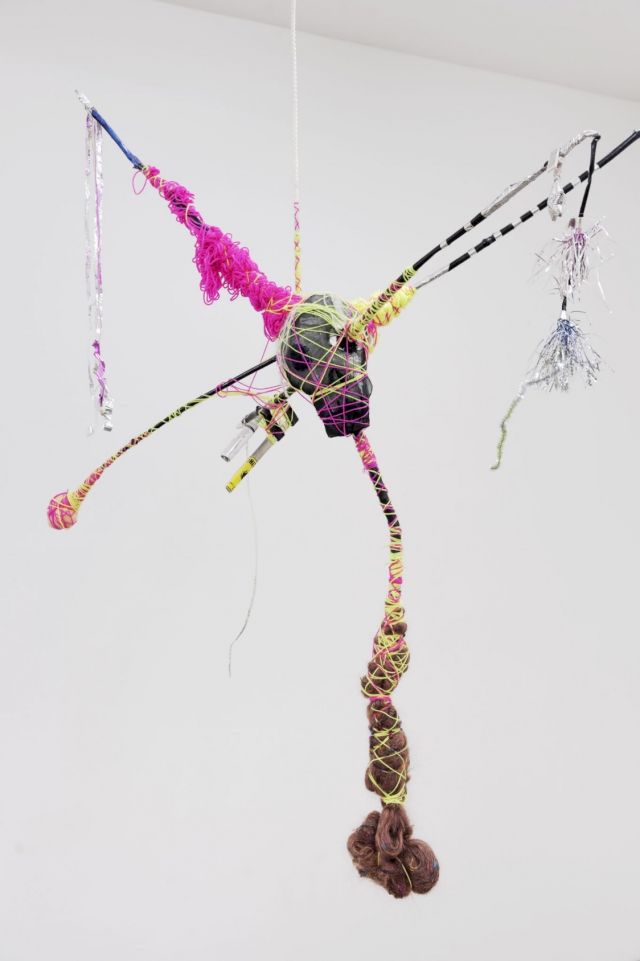

You decide to buy a work of art because you like the piece, not because it would fit perfectly into what you have already.
DOMINIC BRENNENSTUHL
CB:
You own a whole series of works by Volker Hüller. Are you also interested in buying preparatory sketches in order to fully understand the whole process?
C:
If studies are directly connected to the final piece, collecting preparatory work can be interesting. But there are currently no such things as preparatory sketches in his work.
D:
By showing different pieces by Volker Hüller we are already exhibiting the development and working progress. There is sculpture, there are big and small sketches, there is collage. The sculpture “Humbert” has already been part of his final project at University but is something we purchased much later. Volker Hüller studied in Hamburg in Norbert Schwontkowski’s class. So did Monika Michalko. We do try to understand and comprehend the development of an artist.
CB:
Have you ever thought about commissioning a work?
D:
There is indeed one work in this exhibition which was a commission. We included a mobile by Rupprecht Matthies featuring thirty words. These thirty words were a gift by my wife for my thirtieth birthday and there are words friends have selected especially for me. I always said, that I never want to be portrayed by an artist. This work is a portrait of its own kind. Saying that, there is no other piece I would commission.
CB:
How did the artist deal with the commission of this work?
C:
We were in constant dialogue. He asked me to collect words for him. In the end he chose some of the words I gave to him and from this point on I no longer knew what he was going to do with them. He was free to create whatever he wanted and ended up adding a few words himself that he considered suitable.
D:
Within the context of his other works the concept of this piece is not something unusual. Rupprecht Matthies often works with words and corresponds to the value system of our society in a critical manner. The title of the work is accidental and honest. At least this is my interpretation of it.
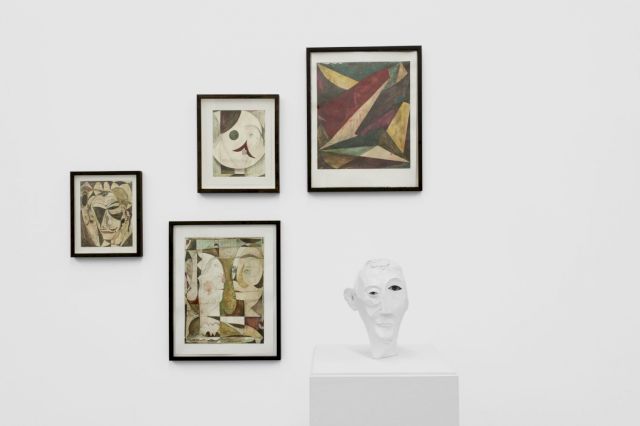
CB:
When the Weserbug opened in 1991 people accused collectors of using the venue as a way to promote artists. With works by Polke, Baselitz, Graubner, Segal, Louis, Stella and Rauschenberg, these accusations seem absurd. Your collection however is still fairly unknown. Are you interested in supporting the existence of this cultural venue now that the funding has been cut?
D:
Art is there to create a dialogue and to cross boundaries. We decided to create this exhibition even though the venue is facing cultural political problems because we believe that art needs a platform. Neither of us sees the exhibition within a political context. Everybody has his own opinion in this discussion.
C:
I think it is important for art to be seen by a large audience – no matter what the size of the budget is. Ultimately the funding does not decide its collective relevance.
CB:
Is the exhibition of privately owned works a step towards making art more accessible?
D:
This exhibition is a contribution we make to this collective way of thinking. It was an impulse for us to show our collection to the public. Everyone can see and also criticize what we’ve assembled.
C:
Of course you could keep it behind closed doors, but art must be seen.
D:
We will only accompany the works for a certain amount of time until they will outlive us.
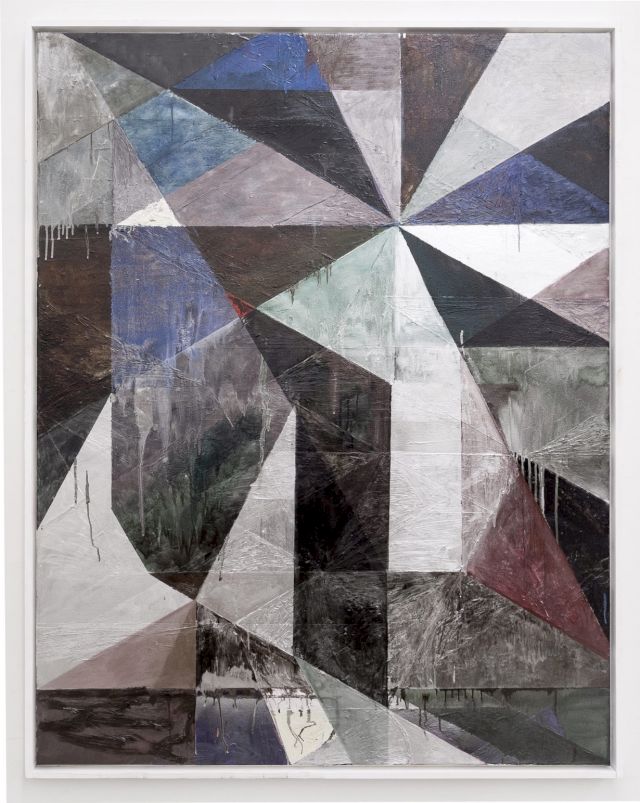

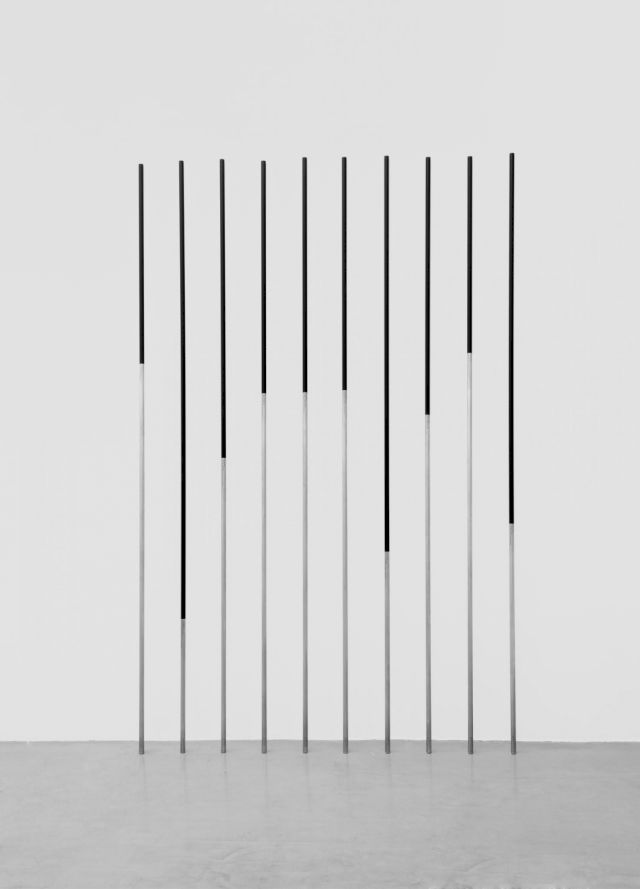
CB:
Did you let the museum curate works from your collection in this show?
C:
Yes and no. We collaboratively planned and executed the exhibition and constantly exchanged ideas.
D:
After we received the blueprint of the rooms we decided which pieces to juxtapose. We did not want the presentation of the works to be a seamless chain of pieces that overpower each other. There are a few very personal moments in this exhibition. For example the work on the right side of the black wall which you see when you enter the exhibition for the first time. It is a work by Jorinde Voigt and its title is “Nullpunkt aller Orte”, what we named the exhibition after. The work on the left is the first piece we have ever bought. It was important to us to present it as an entry point, because it is the window to our collection.
C:
The black wall functions as a portal from which you can immerse yourself into the collection.
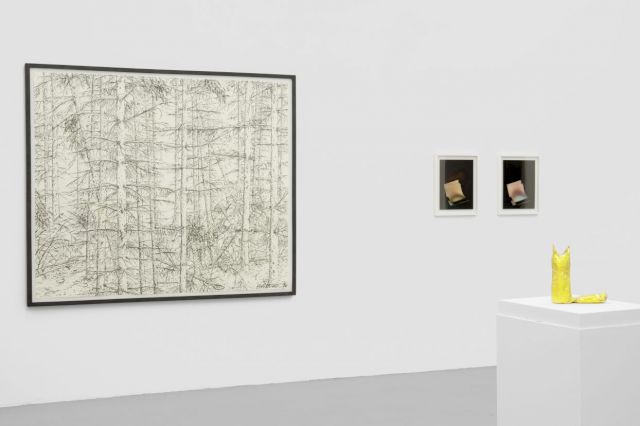
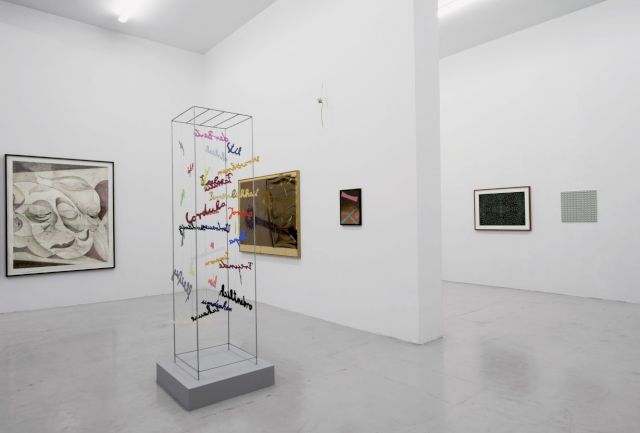
CB:
When did you buy the first work of art? Did your heart skip a beat?
C/D:
Yes definitely. Even today collecting art can give us sleepless nights. We bought our first work in 2007. There is a little story behind every piece we purchased.
CB:
Museums are required to fulfil an educational purpose. What are the duties of collectors?
C:
With every work you buy you have responsibilities in many different aspects: you are responsible for conserving it, for not decontextualizing it. The collector takes care of the work and this requires delicate handling. Art should not be exposed to sunlight and needs enough room.
D:
There is no codex for the duties of a collector. Everyone just has to decide for himself or herself, but the responsibilities do not end with the acquisition. Even young art needs to be preserved and issues of framing and installing the piece arise. It is our duty to make sure the work outlives us. After all, it is also a matter of respect because the artist gives a little piece of theirselves.
CB:
To collect art has always been a cultural technique since ancient times. Making it accessible for a larger audience is something that only started after the french revolution. How does your perception of art change when you exchange the wall of your home for the walls of a museum?
D:
At the museum, art has radiance. It is also interesting to see the works enter a new dialogue with both the space and each other. For us it is exciting to experience these changes in perception.
C:
Because the way the works are installed is so different, we have been able to discover new things in our own collection.
D:
A curated exhibition is something completely different from a presentation of works at your home. We discussed the show with three art historians and it was fascinating to hear what anecdotes and references they came up with. Generally we always find a consensus.
CB:
How did the artists from your collection respond to the exhibition?
D:
Very positively. Most of the artists actually came to the opening and all were satisfied with the exhibition.
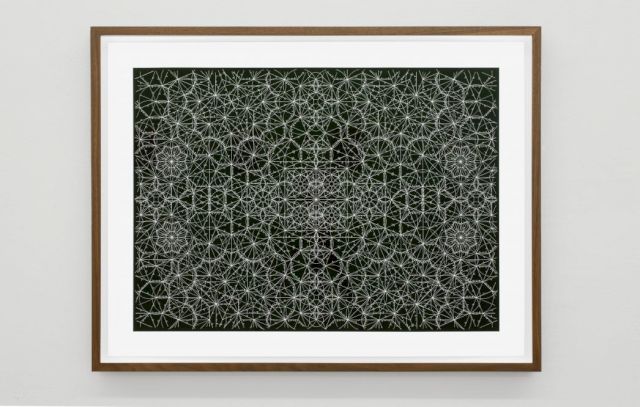
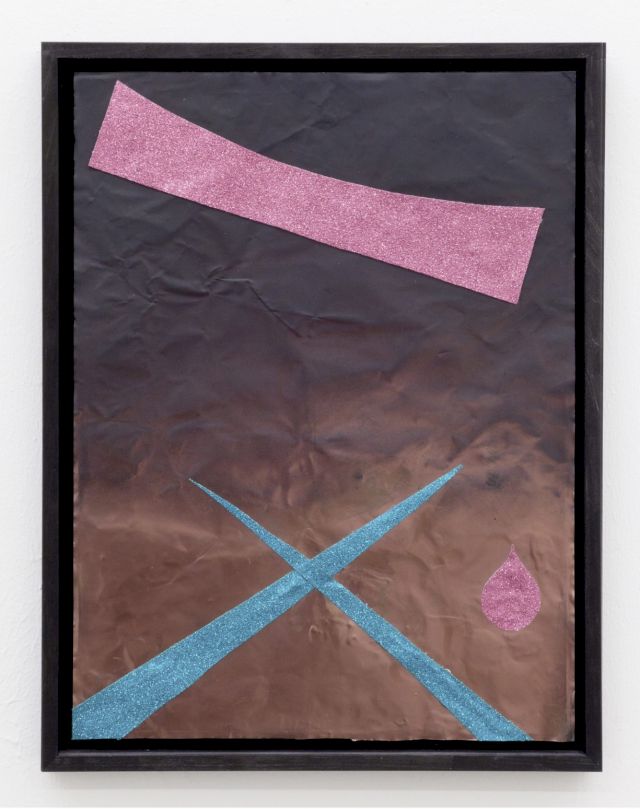
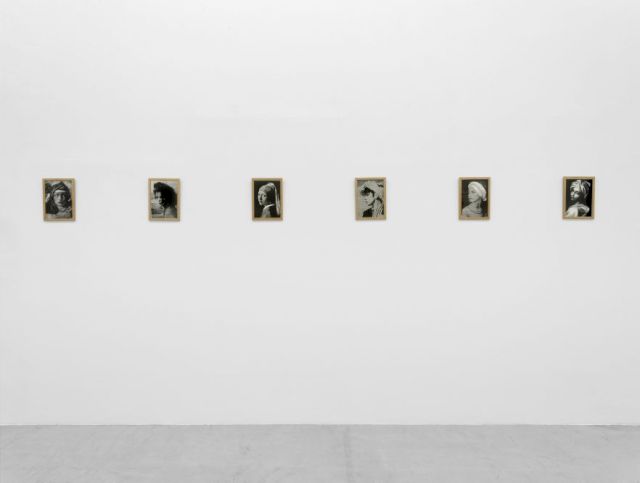
CB:
You built the collection together. Do you share the same opinion whilst selecting a work?
C:
No we don’t. There are works my husband can relate to much more than I can and vice-versa. It is important to concentrate on the idea of the artwork rather than its execution. We often ask ourselves why particularly this artist? There are so many factors that come into play when making the decision to acquire something new. However, sometimes you just cannot pin it down and are unable to come up with no other argument than simply saying “I feel this work belongs to us”.
D:
We usually come up with two different arguments for the acquisition of a work. But in the end we always make the decision together.
C:
It’s not easy to make that decision. Sometimes we take up to half a year after having seen it for the first time to know: “That’s ours!”
D:
We have never bought something for a particular room or a wall. We are interested in pieces that challenge us, and sometimes we come across a work we thought about purchasing a second time. This is usually the moment when we decide to buy it. Collecting can sometimes be a painful procedure but that is part of it.
CB:
Some artworks are confusing and trigger thought processes…
D:
Some works may be disturbing because they actually confront you in a very direct manner but ultimately challenge you to reflect and see things from a different perspective. The propeller by Jorinde Voigt for example, which is installed in our living room, challenges us every single day. It presents itself in a new picture every time we look at it – and that is not only because of its reflections, the light or the shadow that it casts. This is, because it will never have the exact same propeller-position when you look at it.
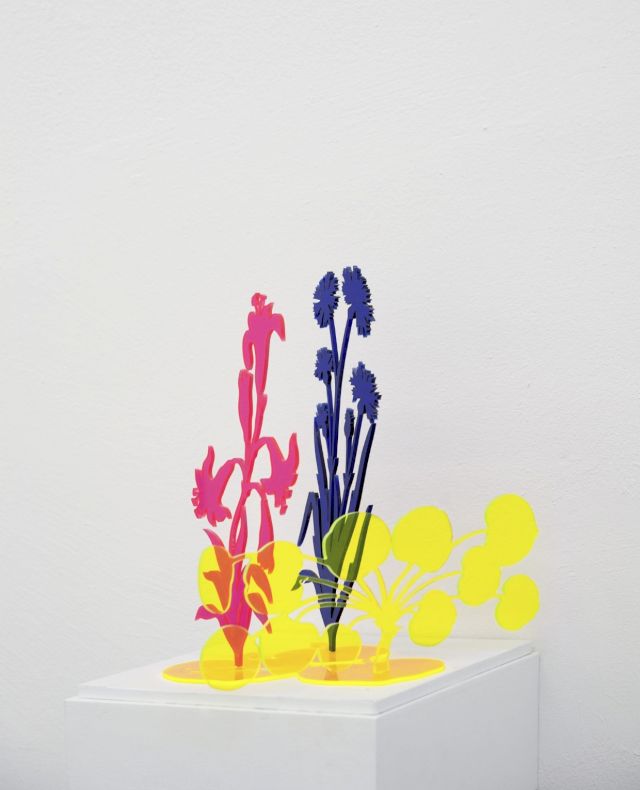
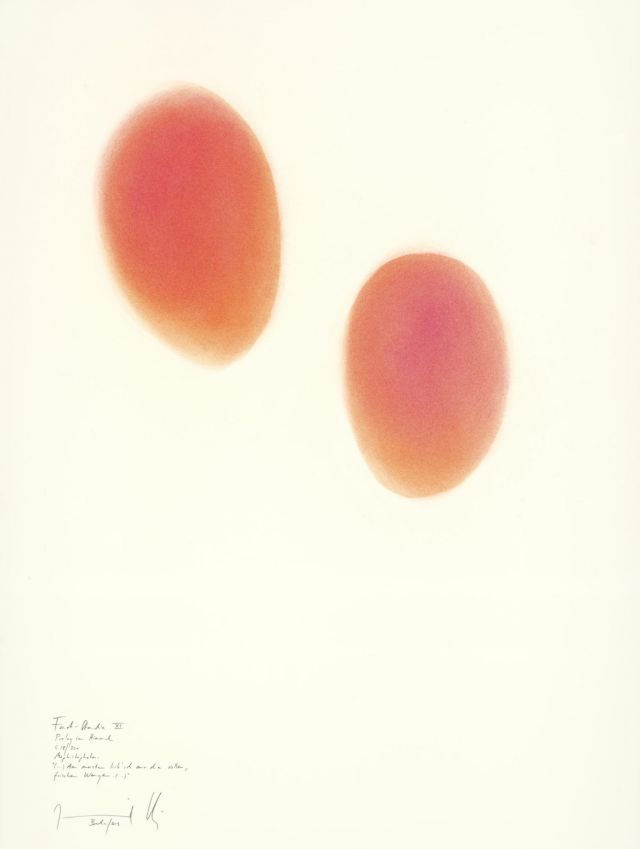
CB:
Does the propeller, because of its movement and constant change, function as a measurement of time? A “Memento Mori”?
D:
We do see a strong work of ours functioning as a Memento Mori. It is a mirrored watch by Alicja Kwade, which, to me is the ultimate representation of time. If you look at the mirror you hear the ticking of the clock. As you are looking at your reflection, you realize that the moment you find yourself in is already in the past. It’s an experience that makes you pause and reflect. The piece has an unusual radiance in the room. The clock behind the mirror is old and used, which is why it needs to be wound up every seven days. Now we miss the ticking of the clock at home… In the exhibition we show early works by Jorinde Voigt (from 2009) and by Alicja Kwade (from 2008) who are being exhibited together for the first time. Combined, they exist in great harmony, because both artists work with perspective, time and parallelism. One work sets something off, the other soaks it up.
C:
At the beginning and at the end of the exhibition you will be able to observe this interplay as it is directly in your view.
D:
Maybe the interplay stands for the continuity of things. Just like the watch stands for a look into the future.
CB:
What are the future plans for your collection?
C/D:
We don’t know yet. Time will tell.
